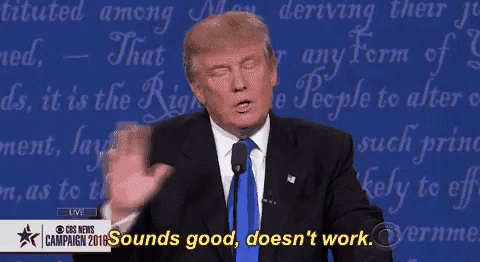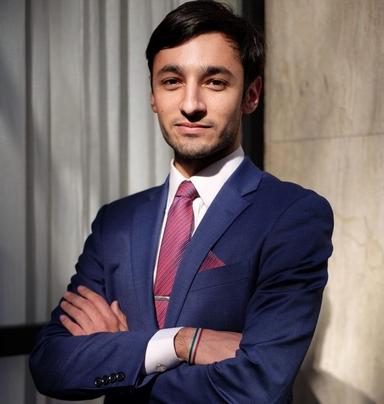Suppose that over the course of 18 years a young man has received a thousand American dollars in cash every birthday from his family members and that after reaching most of the years he decides to open an account in a traditional bank to deposit them. When presenting in the branch, the employee with taste receives $18,000 and extends to our friend a role that says something like that “Declaration of law of origin of funds” the simple view is no more than a model with a tildar cabinet and a space to sign, everything very user.
What our friend does not know is that this one to the point of sounding bank alarms, whose thirst for information must be satiated as soon as possible, or will close your account and will contain the funds in the name of the all-powerful (lease the State). You will start a ping-pong of formal interrogations, judicious statements, fiscal constraints and accounting certifications, costs of our friend obviously. All this supported in a set of standards called “Prevention of Asset Wash and Terrorism Financing” (AML-FT).
But the story begins long before, we can say that the AML-FT is a social experience that already has 30 years. It was the summer of 1989 when the leaders of the main industrialized nations met in Paris, the G7 group. Under the motto of fighting organized crime, and in particular drug trafficking, they created the International Financial Action Group (FAFT) and today 205 countries and jurisdictions criminalize asset laundering and participate in a coordinated network that applies the rules dictated by this group.
This current paradigm is supported by two assumptions: the first is the belief that washing causes damage and should be interrupted; the second is that forcing certain people and companies to perform complex tasks based on international standards is a suitable mechanism for combating washing.
So... Very beautiful the intentions, but the wrong white.

This experiment results in being inefficient for 3 reasons:
- Asset washing controls cause considerable disadvantages to ordinary citizens and refuse or restrict access to banking and financial services to many sectors of society.
- Las Vegas authorities recover 0.05% of illicit funds[1] suggesting that the impact of the AML-FT is only a rounding error in the S.A. DELINCUENTES balances to preserve 99.95% of the gains. The AML-FT insufficient to deter criminals from delinquiring (see formula of the rational criminal of Gary Becker[2]).
- The AML-FT costs exceed the benefits both in the private sector and in the public.
The imposition of implementing these rules created a costly compliance industry formed by lawyers, accountants and auditors, not to mention the cost of approximately 80 international bodies and thousands of government agencies in 205 countries and jurisdictions weighing on taxpayers.
The estimated annual cost for AML-FT compliance in four EU countries in 2017 was $81.4 billion according to LexisNexis[3]. These four countries (Germany, France, Italy and the Netherlands) represent 52.2% of the GDP of the European Union (according to the World Bank in 2017) if we extrapolate the data, we could say that the total cost of compliance in the EU was US$56 billion (or US$144 billion at the time).
Is it worth the expense?
We see, following the European case, it is estimated that the annual earnings of certain crimes amount to EUR 110 billion (according to a very conservative study by Europol of 2016[4]).
Globally, the United Nations[5] calculated that the organized crime market is a total of US$2.1 billion in 2009 (3.6% of the global GDP!) and that the success rate of the AML-FT controls is 0.2%. All these values are increased if they are updated according to today's global GDP growth rate (in nominal terms).
And without considering that this 0.2% of confiscations could not be entirely attributable to the success of applying AML-FT. Now, let's take the swing and see that it happens depending on how much confiscation is attributed to an effective AML-FT:

The framework exposes us that even if all confiscations can be attributable to an effective application of the AML-FT, the results are irrisory in relation to the total amount at stake, and that costs exceed 100 times the benefits (at the best of scenarios).
Why do we continue with this theater globally?
The reasons can be several, and as for politics and ideology I leave you to the reader's taste. In my opinion, the spirit of AML-FT norms is no more than complying with a charging function on a gigantic market that otherwise could not be taxeable, at the same time it meets the reputational requirement of political correction or it classic " We are doing something” Against organized crime.
There is greater focus on penalizing failures in AML-FT controls, than in washing itself. And when banks, financial institutions and companies are penalized it is reasonable to ask if the real target of AML-FT standards are, instead of criminal associations, legitimate organizations (easier whites for the state).
It is also reasonable to ask whether ordinary citizens are more damaged than banks and criminals (at least financially), after all, banks transfer their costs to shareholders and consumers (small dividends, higher commissions, reduced interest rates for traders and high fees for borrowers), not to mention the tax cost to sustain the governmental counterlor structure.
As with climate change, it only recognized four decades earlier by scientists who put their attention, independent researchers three decades ago began to question and point out the weaknesses and design problems in the AML-FT policies (John Cassara, Louis de Koker, Ronald F. Pol, to name only the most relevant ones).
But not all of this lost, recognizing that costs exceed the benefits and that the goals have not been achieved, is a precursor to start reshaping the current paradigm, the change begins when we accept reality.
[1] Department of Justice. 2017. FY 2017 Asset Forfeiture Fund Reports to Congress. Washington DC: Department of Justice. https://bit.ly/2KukcXz.
[2] B = E – P.M. (B is the final benefit expected by the criminal; And it is gross income; P is the probability of seizure, of being discovered by an investigation or by detection mechanisms; and M the punishment, the penalty scale). The creation of this formula earned Gary Becker in 1992 a Nobel Prize in Economics. "Crime and Punishment: An Economic Approach", Journal of Political Economy, v. 76, 1968, pp. 169-217
[3] LexisNexis. 2017. The True Cost of Anti-Money Laundering Compliance. European edition. https://bit.ly/38fGkQQ
[4] Europol. 2016. Does Crime Still Pay? Criminal Asset Recovery in the EU. The Hague: Europol. https://bit.ly/2jMSuca.
[5] UNODC. 2011. Estimating Illicit Financial Flows Resulting from Drug Trafficking and Other Transnational Organized Crimes. Vienna. https://bit.ly/1vb26h8.




Comments